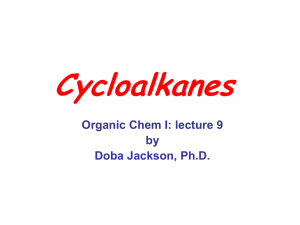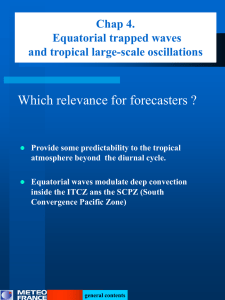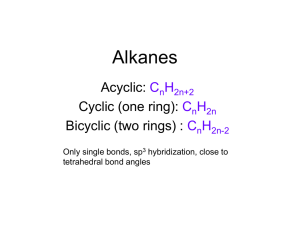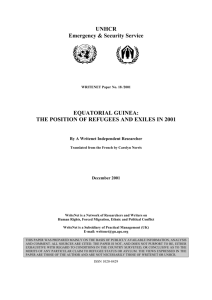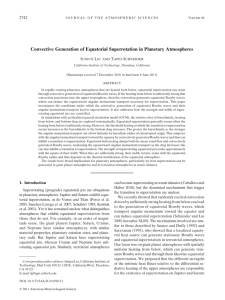Sushmita-South Equatorial Currents
advertisement
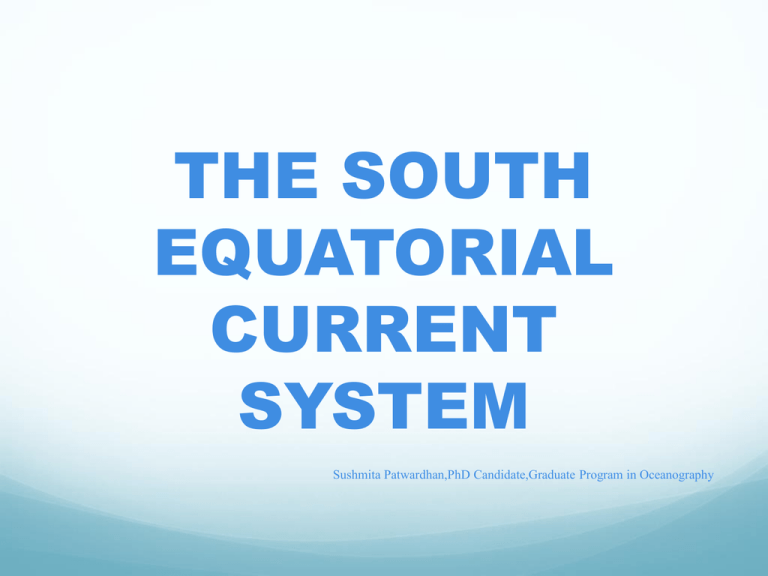
THE SOUTH EQUATORIAL CURRENT SYSTEM Sushmita Patwardhan,PhD Candidate,Graduate Program in Oceanography Southern Hemisphere. In Indian, Pacific and Atlantic oceans. THE SOUTH EQUATORIAL CURRENT THE SOUTH EQUATORIAL UNDER CURRENT THE SOUTH EQUATORIAL COUNTER CURRENT THE SOUTH EQUATORIAL CURRENT Westward flowing current with a depth of 100 m. Northern boundary is at 4°N and southern boundary is between 15°S- 25°S depending on time of the year and longitude. It’s a geostrophic flow. It can be divided into three branches: 1.Southern South Equatorial Current (SSEC) 2.Central South Equatorial Current (CSEC) 3.Northern South Equatorial Current (NSEC) CURRENTS OF THE WORLD SOUTHERN SOUTH EQUATORIAL CURRENT It flows westwards. It is fed by the Benguela Current. SSEC turns northwards at 30°W. Bulk of the flow joins the North Brazil Current. Northern branch also feeds SECC. A small part flows south pole wards and joins the Brazil Current. Sluggish flow. Average transport is 20 Sv for upper 500m. CENTRAL SOUTH EQUATORIAL CURRENT Located between South Equatorial Undercurrent and South Equatorial Counter Current. It bifurcates around 5-6°S. Northern flow merges with North Brazil Current. Part of the northern flow turns north-eastwards and supplies to the SEUC. Southern part initially flows southwestwards and then makes a turn towards the north around 9°S and joins the southernmost part of the SSEC. Average transport is 17 Sv in upper 200m and maximum is 29Sv. THE NORTHERN SOUTH EQUATORIAL CURRENT Located between 1°N and SEUC (3-5°S). Speed is 30cm/s. Volume transport is 12 Sv in upper layer. TEMPERATURE AND SALINITY The Southern South Equatorial Current is more saline than the Central and Northern branches. Salinity of: SSEC: 37-37.2 CSEC and NSEC: 36-36.2 Temperature: 26-28°C at the surface and 22-24°C at a depth of 100m. The annual temperature is pretty stable with a season variability of 4°C. THE SOUTH EQUATORIAL UNDERCURRENT Eastward flowing subsurface current. Depth is between 100-1000m. Flow is maximum in boreal fall i.e. Sept-Oct and minimum in boreal spring i.e. April-June. The SEUC has oxygen rich water. Flow in the surface above the SEUC is towards the east during austral summer and towards the west during austral winter. The transport is about 15 Sv. Salinity is less then 36 THE SOUTH EQUATORIAL COUNTER CURRENT It flows eastwards. Flow is from surface to depth of 400m. Is formed around 30°W. Crosses the South Atlantic up to Prime Meridian. Around 5°S it is entrained by the CSEC. Surface water is warm and salty. High oxygen concentration. Salinity 36.2 at surface and 38 at depth of 400m. IMPORTANCE OF THE SECS It transfers net heat from the Southern Hemisphere to the Northern Hemisphere. It links the two important subtropical gyres of the Atlantic Ocean. The Brazil current is an important western boundary current in the South Atlantic gyre. Plays a role in formation of Gulf stream. Replenishes water in the North Indian Ocean. REFERENCES http://oceancurrents.rsmas.miami.edu/atlantic/southequatorial.html http://oceanmotion.org/html/introduction-general.htm Lothar Stramma.1991. Geostrophic transport of the South Equatorial Current in the Atlantic. Journal of Marine Research,49,281-294. http://www.gfdl.noaa.gov/bibliography/related_files/sgp0102 .pdf





